When I passed through the ancient stone gates of Dalt Vila, I honestly felt like I’d stumbled into another era. The old town of Ibiza sits up high above the modern city, its massive 16th-century walls still standing guard. As I wandered along the cobbled streets, it hit me—this UNESCO World Heritage site isn’t just about the past. It’s a living, breathing gem for anyone who loves to explore.
Exploring Dalt Vila gave me jaw-dropping views of Ibiza Town and the Mediterranean, but also a real sense of just how deep the island’s history runs.
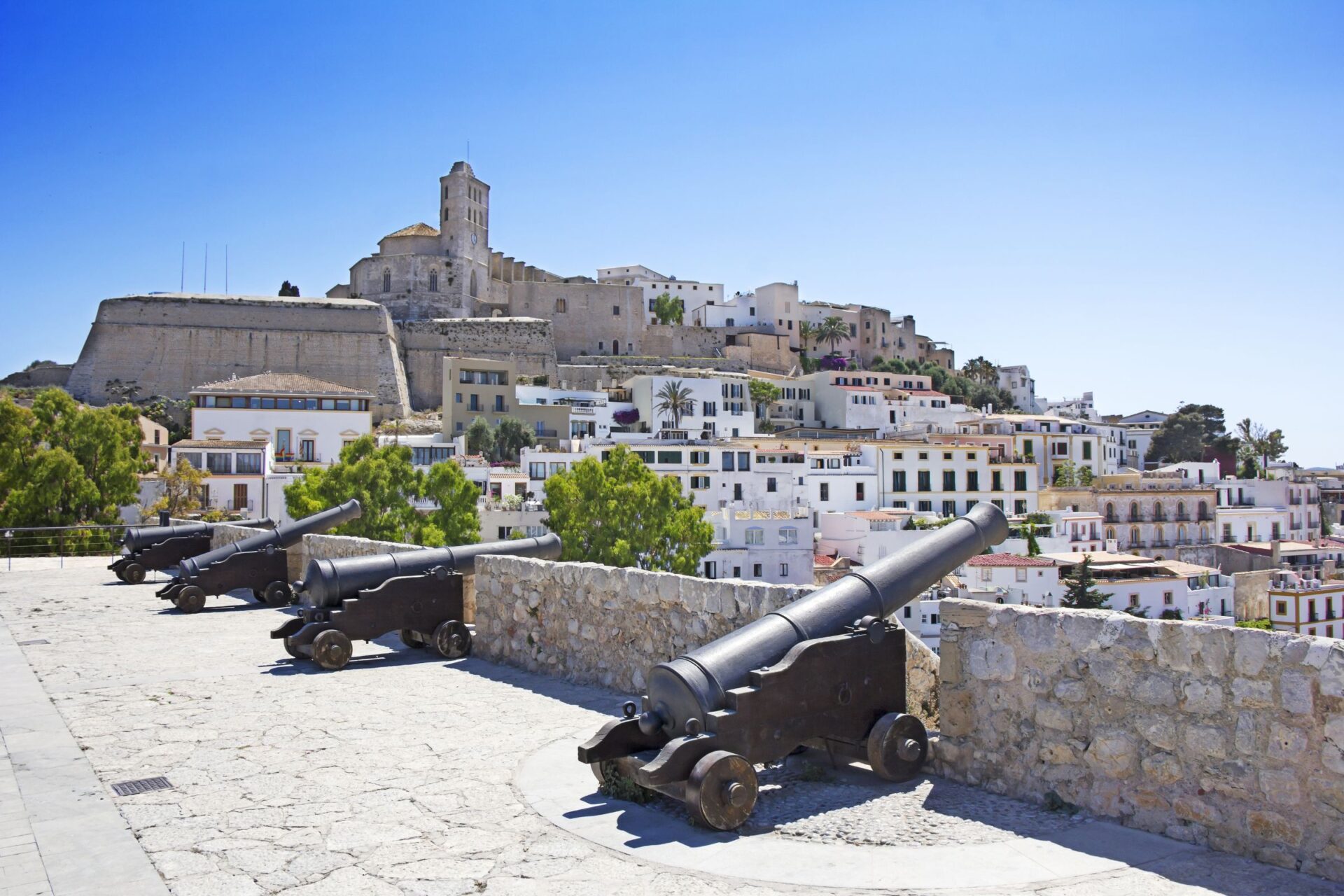
Around every bend, I found lively squares, old monuments, and cozy cafes where locals and travelers mixed. The blend of old stories and daily life made me wonder about all the people who’ve called this place home.
If you’re heading to Ibiza, don’t just stick to the beaches. Take some time to climb Dalt Vila’s hills. You’ll find winding paths, stunning views, and a slice of world heritage that really shows off what makes this island special.
Unveiling Dalt Vila: Ibiza Town’s UNESCO World Heritage Gem
When you step into Dalt Vila, you can almost feel the history stacked up around you. Every stone seems to have a tale to tell. The town’s fortified walls, broad views, and quirky architecture offer more than just a photo op—they give you a taste of Ibiza’s Mediterranean soul.
A Brief History of Dalt Vila
As I wandered those narrow cobbled streets, I quickly realized Dalt Vila’s story goes way beyond Ibiza’s wild party reputation. The Phoenicians started building here over 2,500 years ago, and this hilltop citadel has watched over the town ever since. Romans, Moors, and Catalans all left their fingerprints, shaping both how the place looks and feels.
The huge stone walls from the 16th century really stand out. These ramparts kept pirates and invaders at bay. Today, the mix of Renaissance, medieval, and Moorish touches gives Dalt Vila a character I haven’t seen anywhere else along the Med.
I kept stumbling across ancient churches, secret courtyards, and grand old gateways. Local guides shared stories about how many buildings are still in use, which really brings home just how much history is still a part of daily life here.

Image Source: Wikimedia Commons
UNESCO Designation and Its Significance
Dalt Vila earned its UNESCO World Heritage Site status for good reason. The old town is one of the Mediterranean’s best-preserved walled cities. Its walls and bastions showcase some pretty advanced military design for their era, and the streets inside have seen all kinds of cultures come and go.
UNESCO recognition isn’t just a fancy label. It helps protect the area’s character and architecture, making sure any new developments don’t mess with the old charm. International experts often oversee restoration projects, so visitors like me can feel confident we’re seeing the real thing—not some Disneyfied version.
Honestly, knowing Dalt Vila is on the UNESCO list adds a bit of magic—and maybe a sense of responsibility, too. I tried to tread lightly and soak up every detail.
Walking the Ancient Walls
Climbing those fortified walls? Easily my favorite part of Dalt Vila. Wide stone steps take you up onto the ramparts, and suddenly you’re looking down at a jumble of whitewashed houses, tiny plazas, and the busy harbor. These walls aren’t just relics—they’re open for exploring, and they invite you to wander.
There are seven main bastions, and each one has its own view and story. Signs in English and Spanish share bite-sized facts about old defensive tricks. The Portal de ses Taules, the main city gate, feels like something out of a fairytale.
Benches line the path, and at sunset, the golden light over the Mediterranean is honestly unforgettable. If you come in May, before the summer crowds, you might catch a festival or a costumed re-enactment near the gates. That’s a treat.
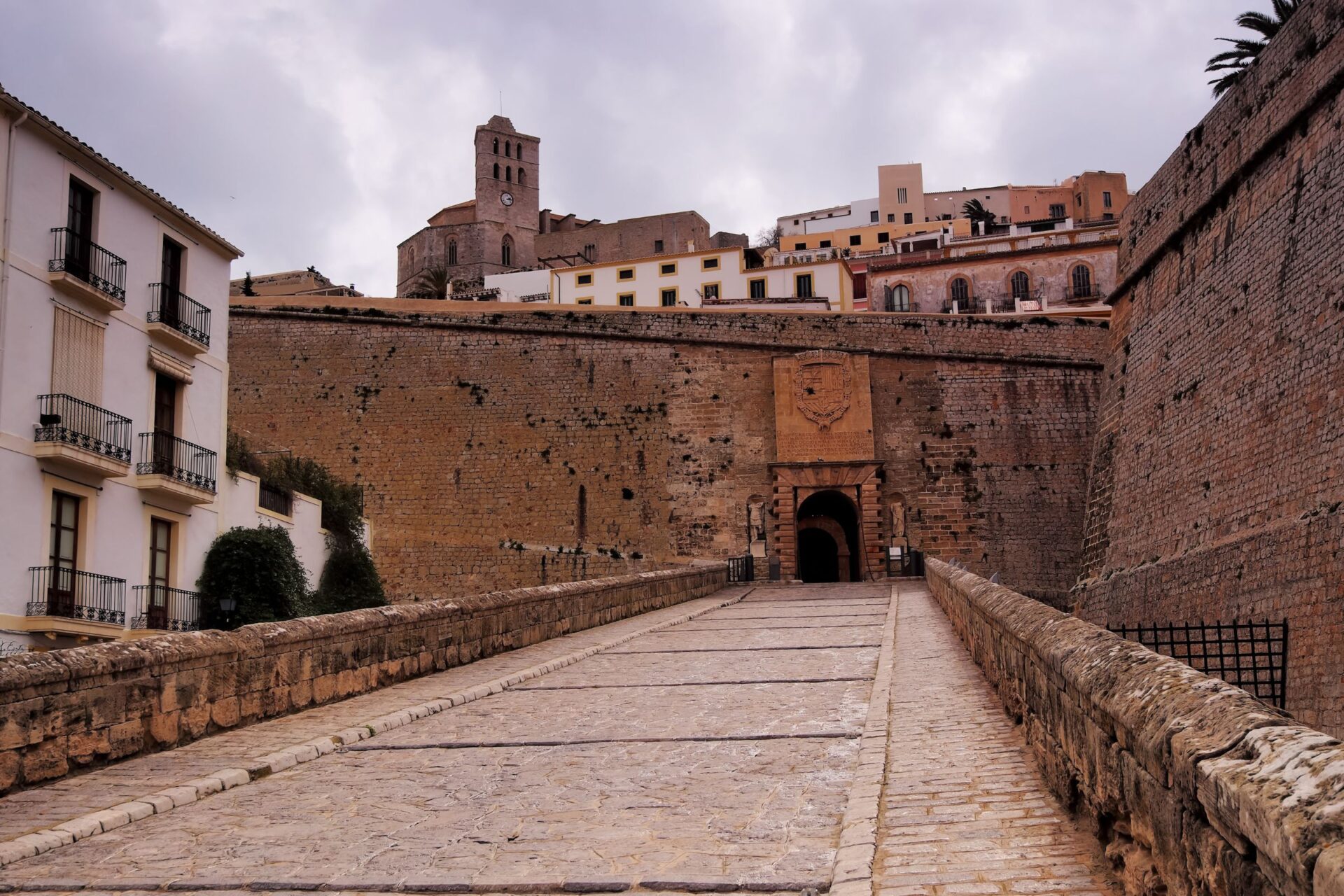
Views Across the Mediterranean
Nothing really prepared me for the views from up top. On one side, you see the rooftops of Ibiza Town and the cathedral rising above the palms. On the other, the deep blue sea stretches all the way to Formentera and beyond. Every few steps, I found a new angle to snap a photo.
On clear days, sailboats drift across the water. I often just stopped to take it all in. Locals say sunrise and sunset are the best times for light, turning the city walls gold or pink. If you’re into photography—or just want a quiet spot—these are the moments to go.
The breeze always carries a mix of pine and sea salt. It’s easy to lose track of time here and remember why so many people fought to control this hill.
Climbing Through Centuries: Architectural Marvels and Historic Landmarks
Dalt Vila’s old stone walls rise above Ibiza Town, packed with centuries of stories. Every few steps, I found myself passing through grand gateways, hushed courtyards, and small museums that capture the spirit of this UNESCO site.
Gateway Bastions and Fortified Gates
The first thing that stopped me in my tracks was the main entrance, Portal de ses Taules. It’s arched, flanked by statues and shields, and it just sets the mood for entering the citadel. Thick stone walls still wrap around the city, with bastions like Sant Pere and Sant Jaume offering sweeping views—both over the town and out to the sea.
Climbing onto the ramparts felt like entering a real fortress. Cannons still perch on the walls, a reminder of days when pirates and armies threatened the island. Near the entrance, a wooden drawbridge creaked beneath my feet. I stood on the edge, scanning the horizon, and felt grateful for the architects who dreamed up these defenses. If you’re planning a visit, wear comfy shoes. The climb gets steep, but those views are worth every step.
Cathedral of Our Lady of the Snows
At the very top, the Cathedral of Our Lady of the Snows stands tall. Its white walls and quiet courtyard pulled me in right away. Built in the 13th century, the cathedral is the heart of Dalt Vila in every sense. I took time to admire the curved arches, the elegant nave, and the mix of Gothic and Baroque touches inside.
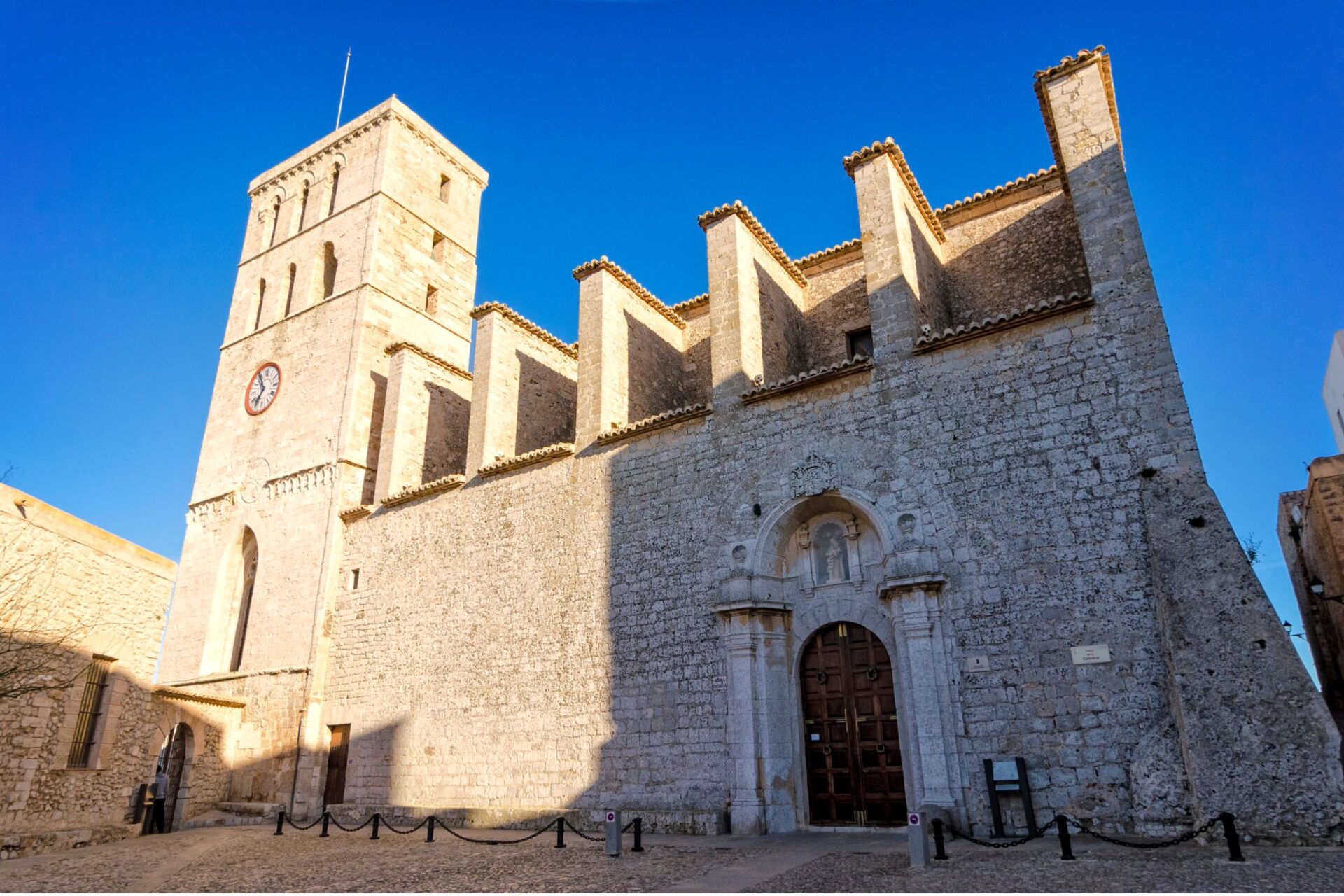
Sunlight streams through stained glass, throwing patterns onto ancient stone. I found a moment of peace on the cathedral’s terrace, looking out over the rooftops. Photographers will love the contrast between the bright church and the endless blue sea. Don’t skip the little side chapels—they’re packed with art and stories.
Charming Cobblestone Streets
Dalt Vila’s streets twist and climb, lined with limestone houses, flower-filled balconies, and sudden peeks at the view. I wandered without a plan, and every turn seemed to reveal something new. The paths here are narrow and pretty steep, so you’re forced to slow down and really look around.
I stumbled onto hidden plazas where locals chatted over coffee, and old houses with colorful wooden shutters. Some streets felt almost empty, making it easy to picture life here centuries ago. Good shoes with grip are a must—the stones can get slippery. If you can, go at sunrise or sunset. The light is softer and the crowds thin out. That’s my favorite time.
Museums and Cultural Stops
Among the winding lanes, I found little museums full of island treasures. The Museu d’Art Contemporani d’Eivissa (MACE) shows off modern art in a centuries-old building. Another favorite, Museu Puget, is packed with paintings of daily Ibiza life from not so long ago.
A lot of museums hide behind plain doors, easy to walk past but always worth a peek. I also ducked into the old city arsenal to see its stone vaults and model cannons. Each stop added a new layer to my understanding of the town’s past. The staff are friendly and happy to share tips or stories that make Ibiza’s history pop. Check opening times before you go, though—hours can be all over the place depending on the season.

Image Source: Flickr
A Local’s Perspective: Immersive Experiences and Practical Tips
As I wandered through Dalt Vila, I found that blending in with local rhythms led to some of my best discoveries. Packing smart, paying attention to what you need, and picking up on local habits made each step easier and more fun.
Weather and What to Pack
Ibiza’s weather changes a lot through the year, and it definitely affects how I pack for Dalt Vila. In summer, temperatures often hit 28–32°C (82–89°F), and the sun feels relentless, especially up on those open hilltops. Early spring and late fall cool off, with temps around 17–22°C (63–71°F), and evenings can get chilly.
I always bring a wide-brim hat, sunglasses, and strong sunscreen. Even in spring, the Mediterranean sun is no joke. Lightweight clothes are best, but I toss in a jacket for windy overlooks or after dark. Winter brings more rain, so I pack a small waterproof jacket then.
A refillable water bottle is essential—I rarely find public fountains at the top, and shops don’t always open early. Here’s my quick packing list:
| Essentials | Notes |
|---|---|
| Hat & Sunglasses | Sun protection |
| Sunscreen | At least SPF 30 |
| Water Bottle | Refillable, lightweight |
| Light Layers | For sun and wind |
| Rain Jacket | Only in winter and spring |
| Small Backpack | Keeps hands free |
Comfortable Footwear and Accessibility
Walking Dalt Vila means you’ll climb lots of steep, worn stone steps and uneven cobbles. The climb surprised me the first time—these streets were built for defense, not comfort. Good grip and ankle support make all the difference.
I skip sandals now and stick to closed shoes or sturdy sneakers. Slippery stones are common, especially after rain or in the morning dew. If you need walking aids or have mobility issues, the upper citadel and some viewpoints can be tough. The lower parts are a bit easier, but the core is tricky.
Families with kids or strollers usually stick to the lower levels. I found that planning short breaks in shaded plazas or quiet side streets helped me catch my breath.
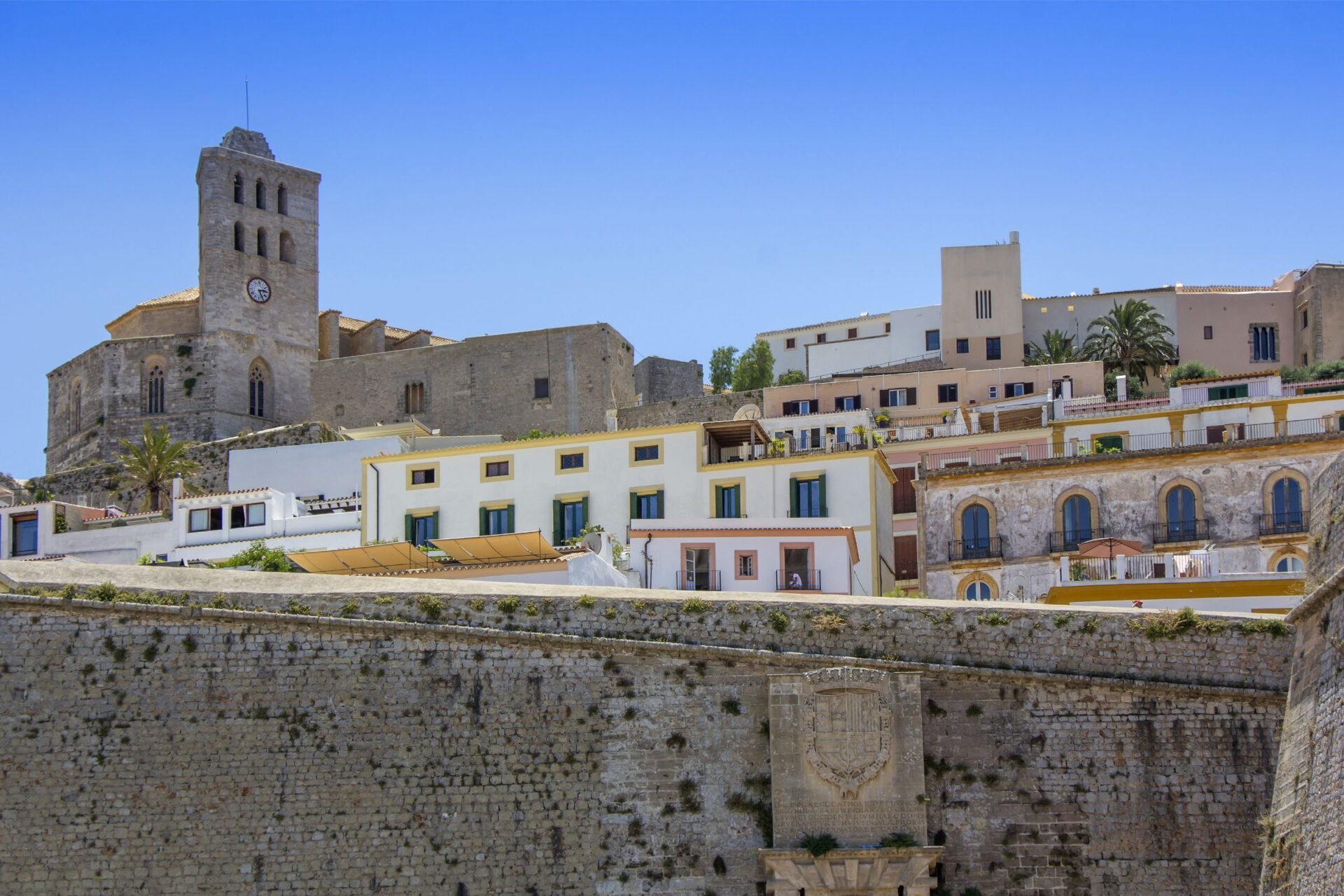
Health, Safety, and Visitor Information
Ibiza town feels safe, but Dalt Vila’s steep climbs mean you’ve got to stay alert. I pay attention at blind corners and when taking photos near edges—some drops are steep.
Bring any meds you need, since most pharmacies are at the bottom of the hill. Tap water is fine to drink, so I refill my bottle often, especially in the heat. There’s not much shade, so I try to avoid climbing at midday and stick to mornings or late afternoons.
Emergency services work well, and I keep the local numbers on my phone:
- Emergency (All services): 112
- Pharmacy (Farmacia): Look for “Farmacia” signs.
Maps at the entrances help with finding your way and point out restrooms, monuments, and exits. I like to download a map just in case my phone signal drops.
Entry Requirements and Customs
Most visitors can wander into Dalt Vila for free. There’s no ticket needed to explore the main streets or walk the walls. Some sites inside, like the Cathedral or Archaeological Museum, may charge a small fee and have limited hours, so I always check online before heading out.
If you’re coming from outside the Schengen Area, make sure your passport has at least six months left. Customs might ask for proof of your travel plans, like hotel reservations or tickets. I keep printouts handy, especially when my phone battery runs low.
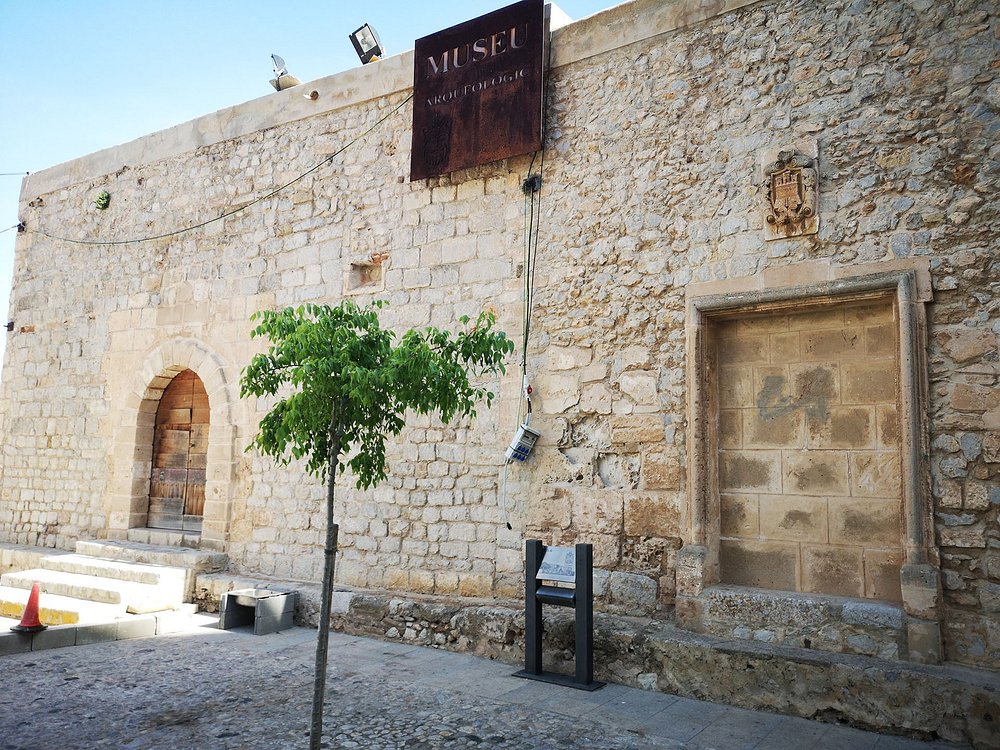
When you arrive in Spain, you’ll need to declare drugs, weapons, or cash over €10,000. Dress codes are relaxed in Dalt Vila, but inside churches and the Cathedral, I bring a scarf to cover my shoulders. It’s a simple local custom, and people appreciate it.
Savoring Ibiza Town: Where To Eat, Drink, and Stay Beyond the Walls
Ibiza Town is so much more than its stone walls and epic views. In the winding streets and lively plazas, I found food packed with flavor, nightlife that buzzes, and plenty of places to stay—whether you want modern comforts or a family-friendly hideaway.
Dining in Dalt Vila: Restaurants, Bars, and Cafés
As I wandered through Dalt Vila, I couldn’t help but notice just how many tempting places there were to eat. It wasn’t only about paella—though, honestly, those fresh seafood rice dishes really do deserve the hype.
Local restaurants like Can Alfredo let me dive into Ibizan specialties, from bullit de peix (a hearty fish stew) to flaó (a minty cheesecake that surprised me). Outdoor terraces made every meal feel a little extra special, especially with those old town views in the background.
Cafés lined the narrow streets and served up strong coffee alongside flaky pastries. I liked starting my morning outside Croissant Show, which sits right on the edge of the citadel. It’s a great spot for people-watching and just soaking up the vibe.
Evenings meant hopping between cozy bars for pintxos and sangria. Places like La Bodega Eivissa drew both visitors and locals, and you could really feel the lively buzz.
Best For:
- Traditional Ibizan cuisine
- Outdoor dining with views
- Social tapas bars
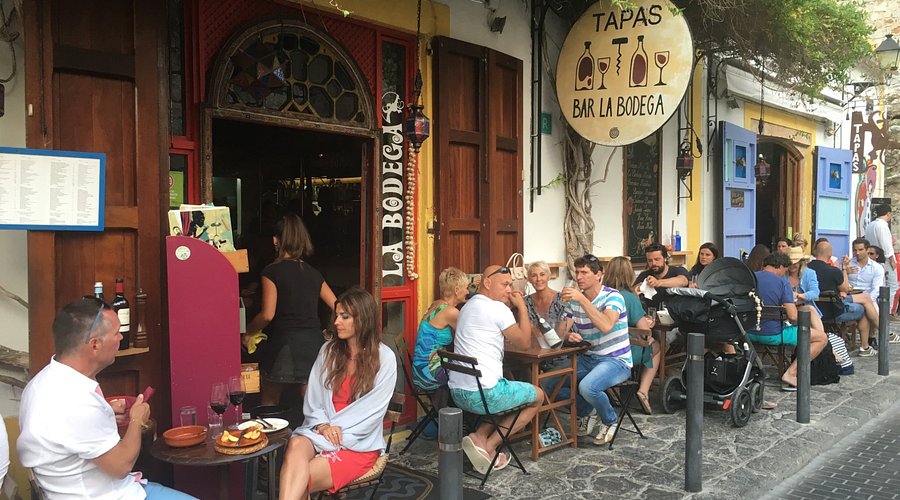
Image Source: Tripadvisor
Nightlife, Pubs, and Local Hotspots
When the sun dropped, Ibiza Town just came alive. I found more than the famous clubs—nights often started at lively pubs or tiny cocktail bars outside the historic walls.
Spots like Paradiso Ibiza Art Hotel’s Bar had live music and a creative drink menu, which I loved. Placa de Vila turned into a social hub at night, with outdoor tables filling up fast.
I could meet new friends over a cold beer or try a glass of hierbas, the local herbal liquor. Sometimes I stumbled onto hidden gems tucked down side streets, where DJs played chill-out tracks and locals hung out with travelers.
- Good to Know:
- Dress is casually chic but comfortable
- Many bars open late but fill up early
Family-Friendly Hotels and Apartments
Traveling with family meant I needed a place that worked for everyone. Ibiza Town offered plenty of family-friendly hotels with spacious rooms, pools, and easy access to both Dalt Vila and the beach.
Hotel Mirador de Dalt Vila set us up with cribs, kids’ menus, and staff who actually seemed happy to share local tips. Apartment hotels like Apartamentos Tropical Garden let us prep snacks or late-night meals, which was a lifesaver.
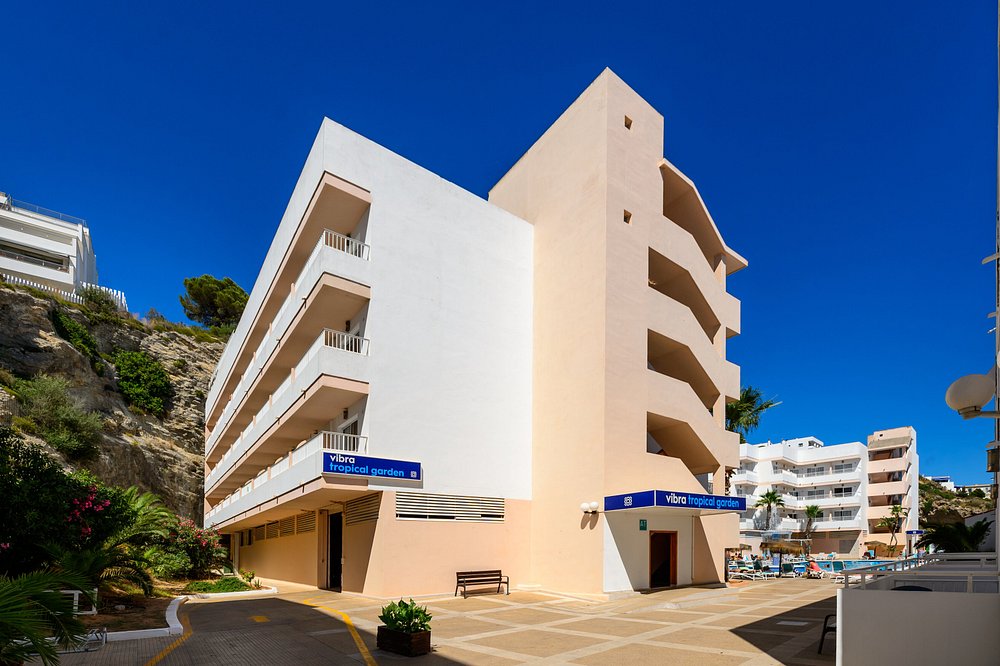
Image Source: Tripadvisor
Having laundry and extra space meant our days felt way less rushed. Being close to playgrounds and pedestrian streets made exploring with kids much less stressful.
Family Perks:
- Kids’ clubs and pools
- Kitchenettes for easy meals
- Central locations
Self-Catering and Unique Accommodation Options
Sometimes I wanted more independence, so I booked self-catering apartments. A penthouse with a terrace or a small studio gave me privacy, city views, and the freedom to come and go as I liked.
Supermarkets nearby made it easy to grab fresh bread and fruit for breakfast. For a more memorable stay, I tried a restored boutique guesthouse inside the old walls.
Some rooms had exposed beams and old stonework, mixing island charm with modern comforts. A few places even offered yoga classes or quiet garden courtyards—perfect for winding down after a busy day.
Tips for Unique Stays:
- Look for studios with balconies
- Historic properties often have great stories
- Many unique lodgings book up early in summer
Making the Most of Your Visit: Activities, Shopping, and Sightseeing Inspiration
Stepping into Dalt Vila, I quickly realized there’s so much more here than just ancient walls. From hands-on activities to unique shops and easy-to-follow guides, every moment connects you to the island’s vibrant past—and, honestly, its present too.
Top Activities and Guided Tours
I found Dalt Vila easiest to explore on foot. Wandering the cobbled streets, I felt like I was tracing centuries of history.
For a deeper dive, I joined a guided tour led by local historians. They pointed out hidden passages and shared stories I would’ve totally missed otherwise.
I always recommend visiting the Ibiza Cathedral at the top. The panoramic Mediterranean views are stunning—don’t forget your camera.
Museums hide within the walls, too, including one focused on local history and another with modern art. Families and solo travelers can join group walks or themed tours, like evening ghost walks.
Most tours run about 1.5 to 2 hours and cover less than a mile (around 1.5 kilometers). Some climbs are steep, so comfy shoes are a must.
Souvenir Shopping and Local Markets
Inside Dalt Vila, I found tons of little boutiques perfect for souvenirs. Local artisans sold jewelry, hand-painted ceramics, and leather goods—each piece seemed to have its own story.
I grabbed woven baskets from a stall in a quiet plaza for friends back home. Some of the best shopping happens at open-air markets, usually set up near the main gates.
These markets pop up twice a week and are great for local food products. Olive oil, island-made cheese, and jars of honey made easy gifts to pack.
For something truly special, I spotted shops selling vintage postcards and old photos of Ibiza. Prices ranged from a few euros to over €50 for rare finds.
Paying in euros is easy, but most places take major credit cards too.

Frommer’s Guides and Other Planning Resources
When I planned my trip, I used both digital and print resources. Frommer’s guides gave me a straightforward breakdown of the main sights and mapped out walking routes.
These guides usually include details like hours, entry fees, and the best photo spots. I found extra tips on travel blogs and the local tourism website, which updates on festivals and temporary exhibitions.
Most hotels hand out free pocket maps at reception—mine marked out recommended viewpoints and shops. Here’s a quick cheat sheet I put together:
| Resource Type | Usefulness |
|---|---|
| Frommer’s Guidebook | Walking routes, history |
| Local Tourism Website | Events, opening hours |
| Hotel Map | Shops, viewpoints |
| Travel Blog Posts | Personal tips, reviews |
Distances, Conversions, and Travel Logistics
Dalt Vila feels compact, though the hills make it a bit of a workout. Most of the big sights sit within half a mile (about 800 meters).
From the main gate, I made my way up to the cathedral at the top. I probably climbed about 1,000 feet (roughly 300 meters), not even counting all those winding alleys.
If you’re planning a visit, just know most signs stick to metric. Quick cheats:
- 1 mile ≈ 1.6 kilometers
- 1 foot ≈ 0.3 meters
- 1 yard ≈ 0.91 meters
- 1 liter ≈ 33.8 ounces
- 1 kilogram ≈ 2.2 pounds
Shops and cafes don’t open early; they usually take a break for siesta in the afternoon, too.
Buses from the port drop you off near the main entrance. I walked from Ibiza Town’s marina to Dalt Vila in about 10 minutes—honestly, I wouldn’t have made it without sturdy shoes. Those stones are no joke.

